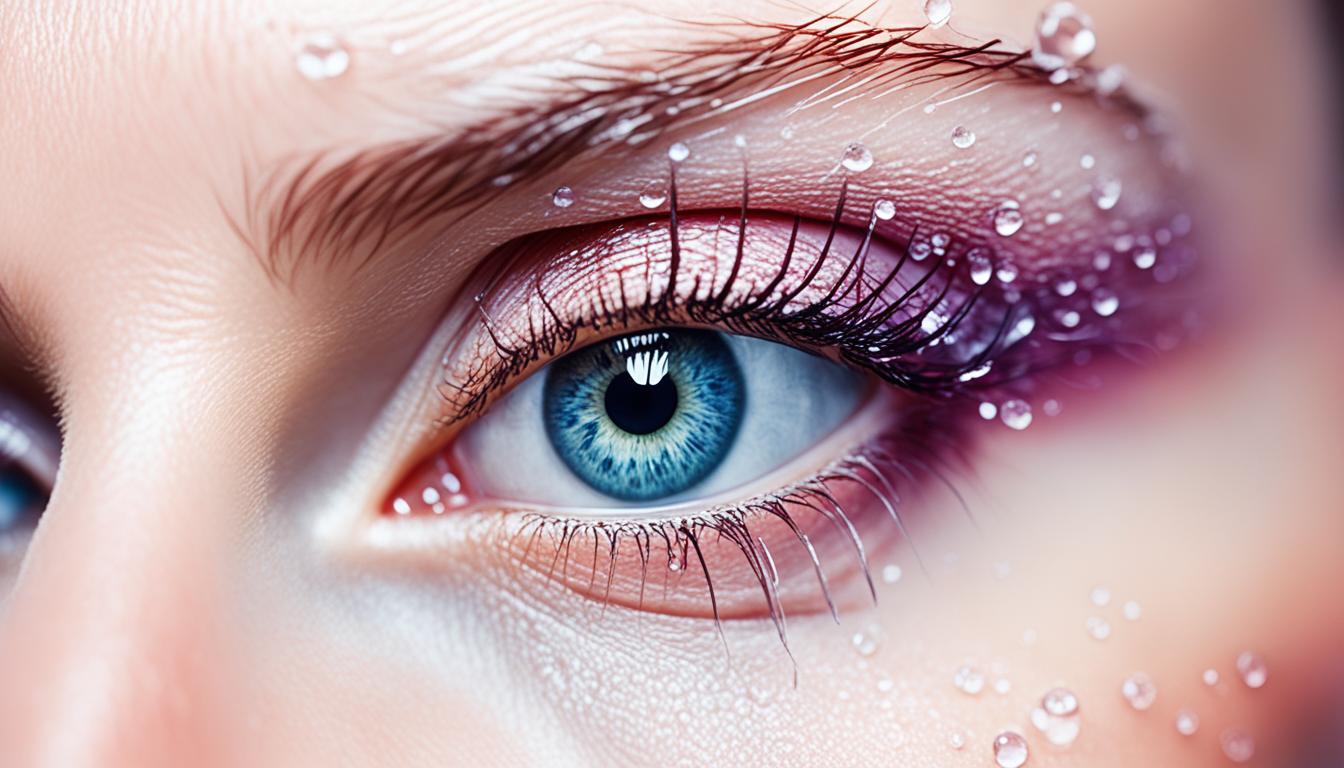Tears decreased production is also called dry eye syndrome. It means your eyes don’t produce enough tears, causing dryness and discomfort. The lacrimal glands produce and manage tears. If they don’t work properly, you might not produce enough tears.
This condition can be linked to diseases like Sjögren’s syndrome, which targets glands. Factors like getting older, some medicines, and your surroundings can also be to blame. Doctors diagnose this by looking at your symptoms and how many tears you make.
Today, scientists are studying how stem cell therapy might help. This treatment could increase your tear production, easing the dryness and helping your eyes stay moist.
Key Takeaways:
- Tears decreased production is known as dry eye. It leads to eye dryness and discomfort.
- The lacrimal glands are key to making sure eyes stay moist.
- Dry eye can be triggered by diseases, getting older, certain drugs, and the environment.
- Doctors figure out if you have dry eye by looking at your symptoms and your tear production.
- Stem cell therapy is a new way researchers are looking into for dry eye management. It aims to help increase tears and keep the eye moist.
Symptoms and Impact of Tears Decreased Production
Dry eye syndrome, or tears decreased production, brings several symptoms. They can make life hard for those who suffer. Symptoms include dryness, irritation, blurry vision, and feeling like something is in your eye. These issues can be very uncomfortable and make seeing clearly a challenge.
The health of your eyes relies on stable tear film and the right amount of tears. Without enough tears, the film is unstable. This causes more tears to evaporate, making the eyes even drier. It makes the symptoms worse for people with dry eye.
Keeping the eyes hydrated is crucial for eye health. When we don’t produce enough tears, the eyes get too dry. This not only makes dry eye symptoms worse but could also harm the cornea. So, keeping our eyes well-hydrated is essential for their health.
Effects of Tears Decreased Production:
- Ocular dryness
- Irritation
- Blurred vision
- Gritty or foreign body sensation
Proper tear film and volume are vital for:
- A healthy eye surface
- Less tear evaporation
- Avoiding dryness
Having a well-hydrated eye surface is key for:
- Good eye health
- Better vision
- Increasing comfort
| Effects of Tears Decreased Production | Tear Film Stability and Tear Volume Modulation | Ocular Surface Hydration |
|---|---|---|
| Ocular dryness | Maintaining a healthy ocular surface | Optimal eye health |
| Irritation | Reducing tear evaporation | Better vision comfort |
| Blurred vision | Preventing dryness | Enhanced comfort |
| Gritty or foreign body sensation |
The lack of tears has a big effect on our eyes. Managing dry eye is crucial to feel better and see clearly. We will talk about how to diagnosis and treat this issue, including new methods like stem cell therapy.
Diagnosis and Stem Cell Therapy for Tears Decreased Production
When someone has less tears, doctors look at a lot of things. They check the symptoms you have and do a close eye exam. This includes special tests to see how much tears the eyes are making.
Doctors can ask you questions and measure the salt in your tears. They also check how long it takes your tears to break up on the eye’s surface. This helps doctors know how bad the problem is and how to treat it.
Now, doctors are trying a new way to deal with less tears using stem cells. These cells can fix tissues and lower swelling in many health problems, like dry eye. Studies show that putting these stem cells from fat into the glands that make tears is safe and works well. It makes the eyes produce more tears and feel better.
There is still more to learn about using stem cells for less tears. These cells can grow new tissue and stop swelling. So, they might be a big help for people with this issue. If we keep learning, it might change how we treat dry eye and give new hope to those with less tears.

